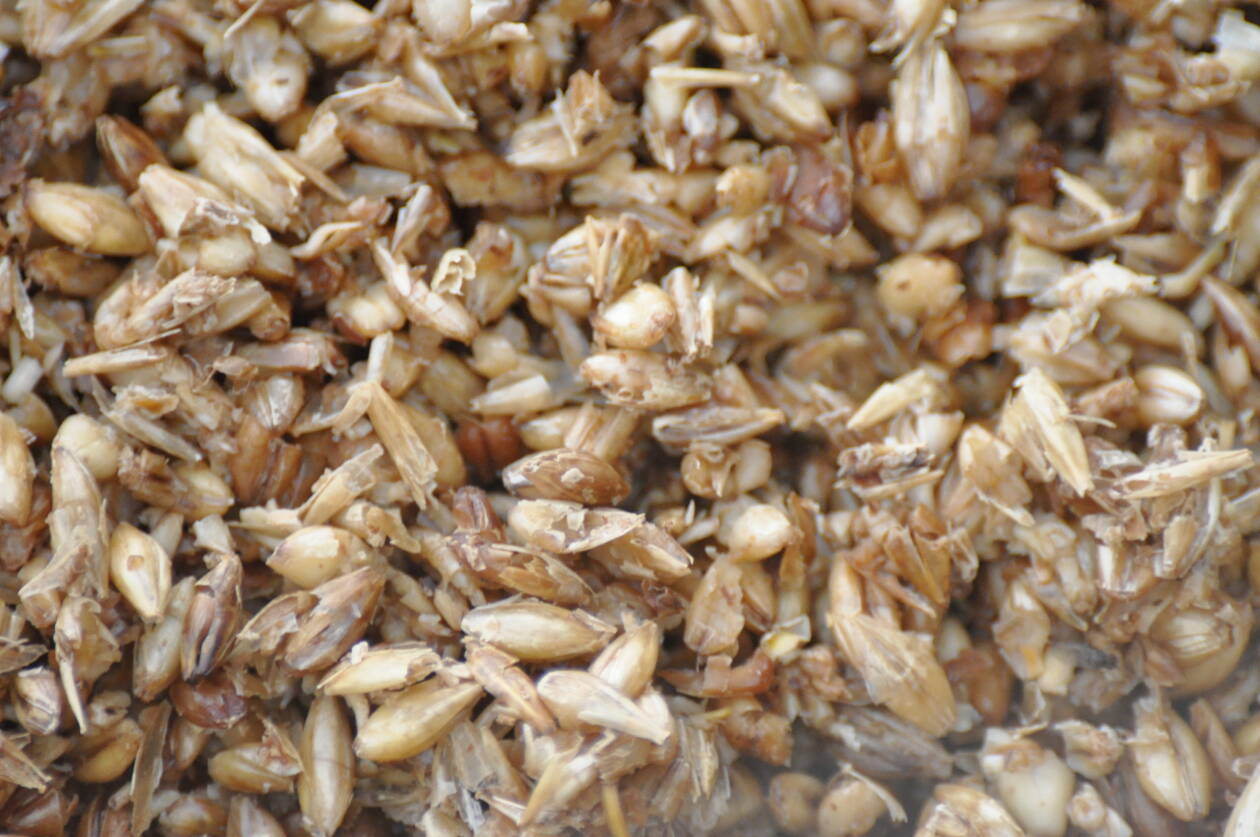This Dutch initiative based out of Amsterdam collects the peel from fruit used by industry to make juices. They use this to create cleaning agents and they use the residue from the squeezed peels to make cattle feed. This way, Peel Pioneers processes 40,000 kg (almost 90,000 lbs.) of peel every day, ensuring our vitamin shots leave zero waste behind.
Peel Pioneers,
the Netherlands

Walt Disney World Resort, USA
Walt Disney World Resort sends food waste such as fat, oils, and leftovers from clearing tables, to a processing plant which extracts biogas from the waste. The residue from this process is used as fertilizer. The biogas is used to generate electricity which is supplied to parts of Florida, including the theme park.

Producing snack bars out of the waste flows from beer breweries. That’s what ReGrained from San Francisco does. The company collects residue grains and uses them as raw material for making their candy bars. Over the coming years, founder Daniel Kurzrock aims to grow this edible recycling enterprise into an international player. They are also developing other products such as bread and pasta, based on by-products.
ReGrained, USA
South African enterprise Agriprotein grows larva. By eating waste, these larva can grow 10 to 200 times in size in the space of ten days. The main application for these dried larva is as feed for predatory fish. The larva are a substitute for catching wild fish to feed other farm-grown fish.
A factory running at full capacity can replace the equivalent catch of 15 million wild fish every year.
Agriprotein,
South Africa


The Belgian company BIGH Farms develops urban farms which supply hospitality businesses and wholesalers. In other words, a super short chain in the middle of town. BIGH not only delivers fruit and vegetables, the chain also hosts Europe’s largest rooftop farm at their Brussels location.
The complex also includes a fish farm. Its aquaponics system (a combination of fish farming and vegetable cultivation) covers an area of some 4000 m2 (13,000 square ft.). Waste produced by the fish is used to fertilize the plants. Part of the harvest will eventually be delivered to the rooftop fish restaurant which is going to open at some point. The rest is supplied to restaurants, specialist outlets and neighborhood stores.
BIGH Farms, Belgium

An initiative by the London-based International Tourism Partnership helping large chains and independent hotels to reduce waste from food and beverages. Its membership totals 24,000 hotels in over 100 countries. On its site, Green Hoteliers provides checklists for hotels to use, covering energy usage and food wastage.
Green Hoteliers, England
6 Sustainable initiatives
Joost Scholten Sander van der Meij
Giulia Menicucci, Peel Pioneers, Regrained
To be able to feed all the people on the planet in the future, we have to be smarter in managing our production and waste. There are numerous initiatives from which we can all learn and benefit. The following six concepts turn the chain on its head.
CIRCULAR CONCEPTS

Cool concepts
3 min
This Dutch initiative based out of Amsterdam collects the peel from fruit used by industry to make juices. They use this to create cleaning agents and they use the residue from the squeezed peels to make cattle feed. This way, Peel Pioneers processes 40,000 kg (almost 90,000 lbs.) of peel every day, ensuring our vitamin shots leave zero waste behind.
Peel Pioneers,
the Netherlands

Walt Disney World Resort, USA
Walt Disney World Resort sends food waste such as fat, oils, and leftovers from clearing tables, to a processing plant which extracts biogas from the waste. The residue from this process is used as fertilizer. The biogas is used to generate electricity which is supplied to parts of Florida, including the theme park.

Producing snack bars out of the waste flows from beer breweries. That’s what ReGrained from San Francisco does. The company collects residue grains and uses them as raw material for making their candy bars. Over the coming years, founder Daniel Kurzrock aims to grow this edible recycling enterprise into an international player. They are also developing other products such as bread and pasta, based on by-products.
ReGrained, USA
The Belgian company BIGH Farms develops urban farms which supply hospitality businesses and wholesalers. In other words, a super short chain in the middle of town. BIGH not only delivers fruit and vegetables, the chain also hosts Europe’s largest rooftop farm at their Brussels location.
The complex also includes a fish farm. Its aquaponics system (a combination of fish farming and vegetable cultivation) covers an area of some 4000 m2 (13,000 square ft.). Waste produced by the fish is used to fertilize the plants. Part of the harvest will eventually be delivered to the rooftop fish restaurant which is going to open at some point. The rest is supplied to restaurants, specialist outlets and neighborhood stores.
BIGH Farms, Belgium
An initiative by the London-based International Tourism Partnership helping large chains and independent hotels to reduce waste from food and beverages. Its membership totals 24,000 hotels in over 100 countries. On its site, Green Hoteliers provides checklists for hotels to use, covering energy usage and food wastage.
Green Hoteliers, England
South African enterprise Agriprotein grows larva. By eating waste, these larva can grow 10 to 200 times in size in the space of ten days. The main application for these dried larva is as feed for predatory fish. The larva are a substitute for catching wild fish to feed other farm-grown fish.
A factory running at full capacity can replace the equivalent catch of 15 million wild fish every year.
Agriprotein,
South Africa



Joost Scholten Sander van der Meij
Giulia Menicucci, Peel Pioneers, Regrained
To be able to feed all the people on the planet in the future, we have to be smarter in managing our production and waste. There are numerous initiatives from which we can all learn and benefit. The following six concepts turn the chain on its head.
6 Sustainable initiatives
COOL CONCEPTS
IN CIRCULARITY
3 min








